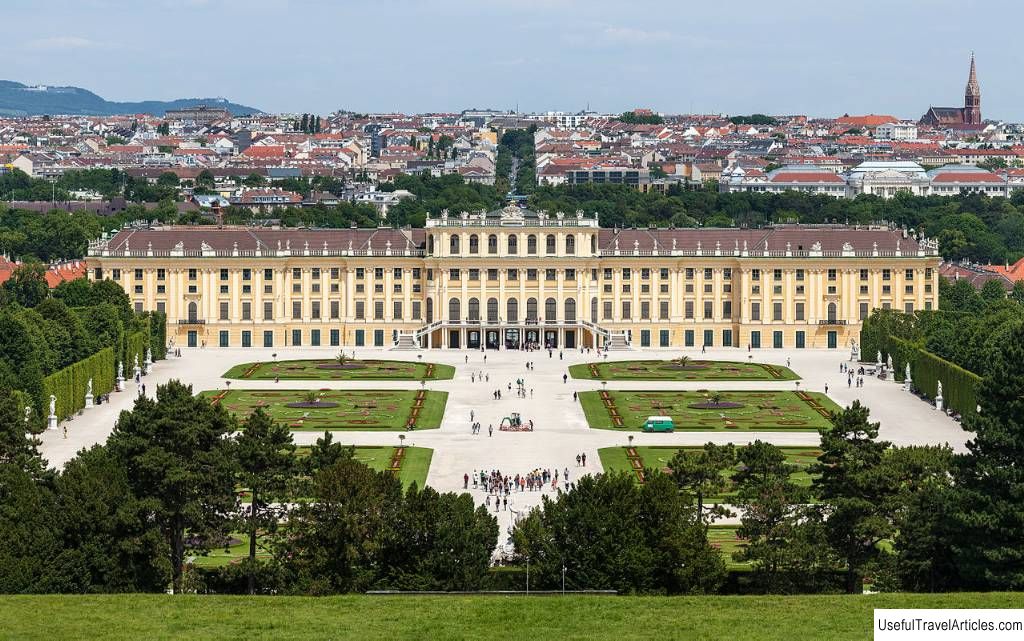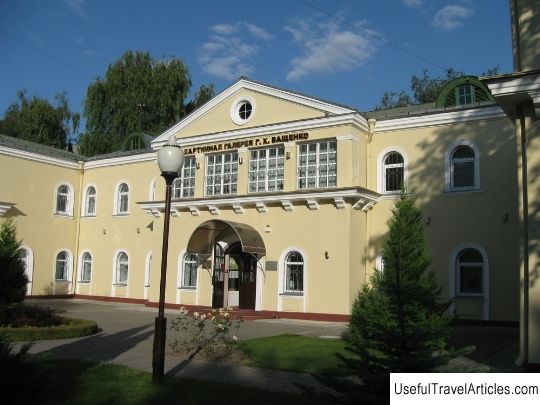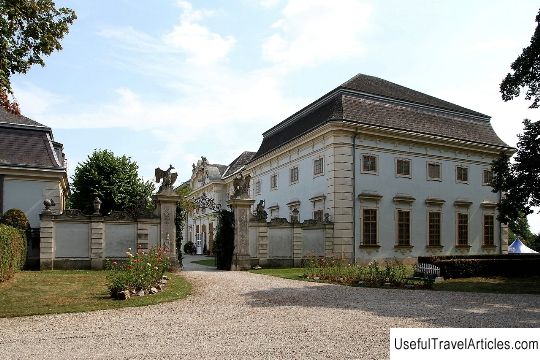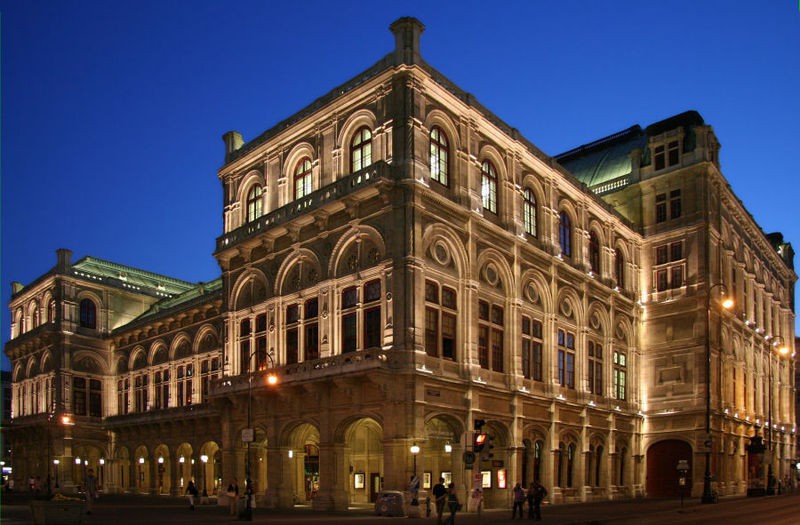Schonbrunn Palace (Schoenbrunn) description and photos - Austria: Vienna
Rating: 9,2/10 (1039 votes) 
Schonbrunn Palace (Schoenbrunn) description and photos - Austria: Vienna. Detailed information about the attraction. Description, photographs and a map showing the nearest significant objects. The title in English is Schoenbrunn. Photo and descriptionSchonbrunn Palace is famous as the main summer residence of the Austrian emperors from the Habsburg dynasty. This palace, which was built from 1696 to 1713, is considered the pearl of the Austrian Baroque. The famous Johann Fischer von Erlach was the architect of the building. The palace itself is located in the western part of the capital of Austria - Vienna, at a distance of 5 kilometers from the historic city center. In the immediate vicinity of the palace and park ensemble there are two metro stops - Schonbrunn and Hitzing. It is worth noting that the large Schonbrunn Zoo, which is considered the oldest in the world, is adjacent to the park. History of the palaceBack in the 14th century, a picturesque mansion was located on this site, consisting of a residential building, agricultural land, stables and mills. In 1569 this estate was acquired by the Habsburgs themselves. And already under Ferdinand II, who ruled from 1618 to 1637, this miniature palace began to be used as an imperial hunting lodge. After the death of the emperor, his widow settled here, and it is believed that it was during her time that the palace received its modern name - Schonbrunn. However, its first building was destroyed during the siege of Vienna by the Turks, so at the end of the 17th century it was decided to build a new palace. Interestingly, the architect of the building, Fischer von Erlach, created Schonbrunn on the model of the famous Versailles. In 1728, Schonbrunn went to the future Empress Maria Theresia, who immediately turned her beloved castle into the center of the social and political life of Austria. In the forties, construction work was resumed here, and in 1747 a theater was opened in the northern part of the palace, while the empress herself also liked to take part in performances and was engaged in singing. And in 1752, Emperor Franz I, the husband of Maria Theresa, initiated the creation of the Schonbrunn Zoo, founding a small menagerie on the territory of the palace park. There was also a kind of botanical garden with greenhouses, where rare exotic plants brought from the West Indies and other colonies were exhibited. These greenhouses were rebuilt in 1882 and are now three powerful glass and metal pavilions, each of which is regulated to specific temperatures. This complex of buildings was named the Palm House. After the death of Maria Theresa, Schonbrunn continued to be used as the summer residence of the Habsburgs. The palace was especially loved by Emperor Franz Joseph I, who was born here in 1830. And after his accession to the throne, Schonbrunn became the main residence of this monarch. During wartime, the palace was hit by air fire several times, but the damage was insignificant. And after World War II, the military headquarters of the British command sat in Schonbrunn. Since 1918, after the fall of the Austrian monarchy, Schonbrunn Palace and its magnificent park were open to tourists. InteriorIn total, the palace consists of 1441 rooms, but only 40 halls are open for tourists. Especially worth noting is the spacious Ceremonial Hall, also known as the "Hall of Fights and Fights". The walls of this room are decorated with numerous paintings from the 18th century, depicting scenes of famous battles, as well as ceremonies such as coronations or weddings. The Rosa Hall is also interesting, painted with amazing landscapes of Switzerland and Italy, made by the artist Joseph Rosa. You should definitely visit the magical Hall of Mirrors, as well as the living quarters that belonged to the famous imperial couple - Franz Joseph and Elizabeth, known as Sisi. All rooms and halls in Schonbrunn are distinguished by their rich interior and an abundance of small interesting details. Many of them feature luxurious Rococo decorations, antique wooden furniture trimmed with gold, bronze and mother-of-pearl, unusual Chinese vases, Bohemian glass chandeliers, tiled stoves and many different paintings. There are also many separate rooms in the palace, where unique collections of tapestries and porcelain are exhibited. It is also worth noting several so-called Chinese cabinets, decorated in oriental style. Interestingly, in one of them the last Austrian emperor Charles I signed his abdication. Park and ZooThe park, laid out around the Schonbrunn Palace at the end of the 17th century, is made in strict French style and is distinguished by the primacy of symmetry. It is decorated with a variety of perfectly trimmed flower beds, curly shrubs and hedges. Along the sides of the park's main avenues, 32 allegorical sculptures, symbolizing virtue, rise. One of the main attractions of the park is the pavilion known as Glorietta, installed at the very entrance to the park. It is a 20 meter high observation terrace, which can be reached by a luxurious spiral staircase. The Glorietta was built in 1775, and now there is a cafe with live music on Sundays. Also worth noting are the monumental Neptune fountain and the amusing labyrinth, completely restored in 1998. Tourists are also invited to attend the Vienna Philharmonic's Summer Night Concert annually in the park at Schonbrunn Palace. It takes place in May or June and is free for everyone who wants to try classical music. As for the zoo, there are also preserved old buildings of the 18th century on its territory, now used as a cafe. Schonbrunn Zoo is also famous for the cute giant pandas that are quite rare in other European zoos. There are also animals of the Arctic and Antarctic, inhabitants of the Amazon rainforest, and aquariums and terrariums.                           We also recommend reading Galerie nationale du Jeu de Paume description and photos - France: Paris Topic: Schonbrunn Palace (Schoenbrunn) description and photos - Austria: Vienna. |




